Psoriasis is presented as a non-infectious skin pathology of a chronic nature. Statistics say that 3. 7% of the world's population is susceptible to this disease known as psoriasis. Gender in this case does not matter, psoriasis is not a contagious disease, while the risk group is represented by people aged 14-27 years. Spotted red peeling with white scales appears on the skin.
Localization is possible on any part of the body, but the most common places are the scalp, lower back, knees, and elbows. Since the disease in question is chronic, it is manifested by periods of remission and exacerbations. How much does the pathology affect the patient's life and how to get rid of psoriasis forever?
Reasons for appearing
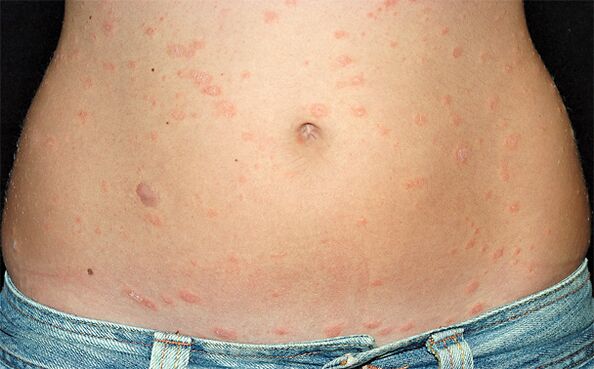
In order to understand what causes psoriasis, it is important to realize that the process of creating the pathology is systemic, involving both the skin and the entire human body. The reasons are not entirely clear, they can be viral, infectious, hereditary, neurogenic or mixed. Humoral and cellular immunity is activated, which contributes to the start of an autoimmune process of cell damage, mainly epidermal cells.
The metabolism is also disturbed, and a burdened heredity also aggravates skin psoriasis. As a result, cell regeneration is accelerated by 3-5 times, which leads to the formation of psoriatic plaques. So why does psoriasis appear, in which 80% of the quality of life depends on the correct treatment and timely detection of the disease:
- bad heredity;
- depression, constant stress;
- dysbacteriosis;
- problems with hormones;
- allergic diseases;
- candidiasis and streptoderma;
- viral pathologies;
- Seeks;
- infections of a parasitic nature;
- problems with metabolism.
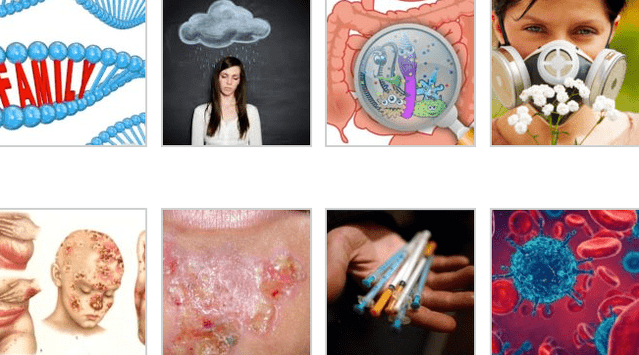
symptoms
The amount of rash at the onset of pathology can be considered insignificant. Studying the symptoms, you can know how psoriasis looks on the body and how to recognize it. Psoriasis plaque plays the role of a key symptom. This is a hyperemic area of skin with scales. Against the background of healthy skin, it looks noticeable and exalted. The presence of the following signs is the reason to urgently consult a dermatologist:
- Convex spots on the skin with light-colored scales;
- itching in problem areas;
- Excessive skin dryness and peeling;
- Painful cracks, blisters in the area of the palms and feet;
- Deformed and peeling nail plates.
types of psoriasis
The classification of psoriasis involves dividing the disease into different types and forms. It is worth considering the following types of psoriasis, taking into account the localization of the pathology and the nature of the rashes:
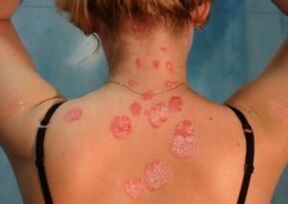
- Plaque psoriasis on the body is often referred to as vulgar, common, or plain. This is the most common variant, diagnosed in 85% of all patients. Inflamed areas of skin have a typical appearance for the disease in question - they peel off easily, become red and have a fever. The red skin under the scales is slightly bruised and may bleed. Over time, the plaques merge into what is known as the paraffin lake.
- Inverse cutaneous psoriasis affects the flexor surfaces. Inflamed areas of skin do not peel and almost do not protrude above healthy skin. The localization is represented by skin folds, namely folds under the breast, in psoriasis in women, armpits, the area of \u200b\u200bthe external genital organs, the inner surface of the thighs and skin folds in the groin. When sweat is released, the skin is injured or friction occurs, the condition of the inflamed areas worsens. Diabetics and children are the most common patients.
- Pustular psoriasis on the skin is characterized by the most complex symptoms. Bubbles with a transparent non-infected exudate of an inflammatory nature rise above healthy areas of the skin. Thick, inflamed, red skin around the pustules with fever.
- Rupioid psoriasis in humans is characterized not only by plaque-like rashes, but also by acute inflammation of the epidermis. The skin surface under the plaques is light pink and weeping.
- Guttate psoriasis in adults is characterized by a large number of small vesicles of purple or red color. The shape of the bubbles can resemble circles, teardrops, dots, or drops. The affected area is often quite extensive, it can be psoriasis on the head, neck, shoulders, back, lower legs or thighs. Angina or streptococcal pharyngitis are often provocateurs of the development of the pathology in question.
forms of psoriasis
The forms of psoriasis can be psoriatic erythroderma, arthropathic psoriasis or psoriatic onychodystrophy:
- Psoriatic onychodystrophy affecting the nails leads to deformation of the nail plate on the fingers of the lower or upper extremities. It is possible to change the color of the nail itself or the nail bed. This type of psoriasis also leads to the formation of nodules, transverse lines, spots, dots, as well as increased fragility and delamination. Even complete loss of the nail is possible.
- Erythrodermic psoriasis in men and women develops gradually and proceeds with complications. This is a consequence of ignored plaque psoriasis, when the epidermis becomes very red and swollen, which is characterized by a clear acute inflammatory process. Peeling and inflammation spread over a large area, accompanied by pain, itching and swelling of the subcutaneous tissue. With this form of pathology, a fatal outcome is more likely than others, since the body loses the ability to regulate body temperature due to widespread inflammation, peeling and detachment.
- Psoriatic arthritis, in addition to the main symptoms, is complemented by an inflammatory process in the joints and connective tissue. This form of pathology can affect any joints, but most often it is small joints of the upper and lower extremities. If the disease spreads to the knee or hip joints, there is a high chance of losing mobility. The considered form of the disease accounts for 10-15% of all cases in which psoriatic skin disease is diagnosed.
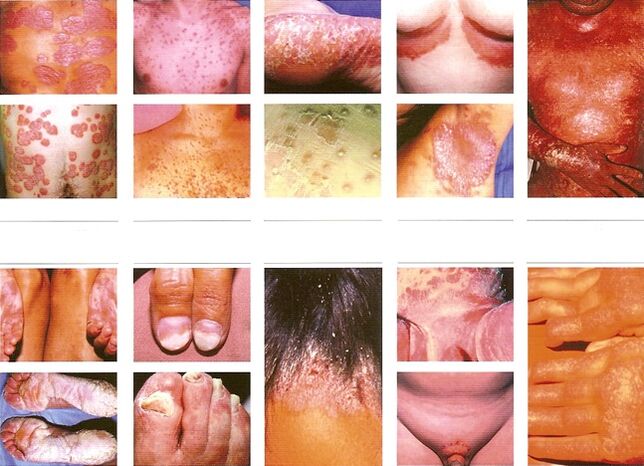
stages of development
The development of psoriasis is characterized by three consecutive stages. Each patient with the disease in question goes through them all, but with proper treatment, the duration of the second phase can be significantly reduced:
- The progressive stage is characterized by an increase in the first signs and a deterioration in general health;
- In the stationary stage there is a peak in the development of pathology;
- The regression stage is represented by the cessation of symptoms and a significant improvement in general health.
diagnosis
A dermatovenerologist deals with the diagnosis and further treatment of the skin disease psoriasis. There are usually no difficulties in determining the disease, since skin lesions are of a special nature. Additional laboratory tests in the form of determining the rheumatoid factor and a complete blood count are rarely required. The involvement of a rheumatologist becomes relevant when psoriatic arthritis is diagnosed. In such a situation, it is necessary to take an X-ray of the joints. The advisability of skin biopsy is observed in extreme cases, when it is difficult to make a differential diagnosis.

The quality of life
The occurrence of psoriasis leads to a significant impairment of the quality of life. Difficulties can arise in social adjustment and in the work environment due to physical and mental problems. Severe itching and pain can make basic life processes more difficult: sleeping, personal hygiene, walking, exercising, running errands at work, running the household, pets.
Patients often show excessive concern for their own appearance, fear of negative reactions from others, and low self-esteem. Pain along with itching and emotional discomfort often leads to social isolation, anxiety disorders, social phobia and depressive states.
treatment
Getting rid of psoriasis involves an integrated approach using the following categories of drugs and medicines.
creams and ointments
With ointments and creams, you can fight psoriasis very effectively and with minimal side effects. As a rule, these funds are applied directly to the inflamed areas:
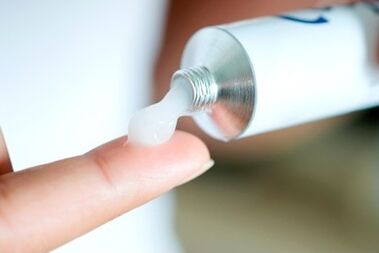
- Hormonal ointments are among the most effective, they eliminate the main symptoms and block the reproduction of keratinocytes. The strongest means of this category can irritate the skin, provoke dryness and thinning of the epidermis.
- Salicylic acid eliminates psoriasis flakes by cleansing the skin. The dosage when using this remedy is extremely important as excessive use will lead to hair loss and skin irritation.
- Retinoids are the active form of vitamin A, they are almost as effective as hormonal ointments, but the clinical effect is achieved longer. Hypersensitivity to ultraviolet light is the most common unwanted syndrome.
- Tar ointments reduce the severity of negative symptoms and block the growth of skin cells. Side effects include alopecia, acne or folliculitis.
- An ointment or gel form of vitamin D. Combined use with hormonal agents gives the maximum effect.
- Moisturizers help to get rid of secondary negative symptoms in the form of dryness and itching, but they are unacceptable as the main method of treatment.
- Anthralin in the composition of ointments helps to get rid of dandruff, blocks the proliferation of keratinocytes. After applying to the inflamed area, after some time the product must be washed off.
Psoriasis tablets
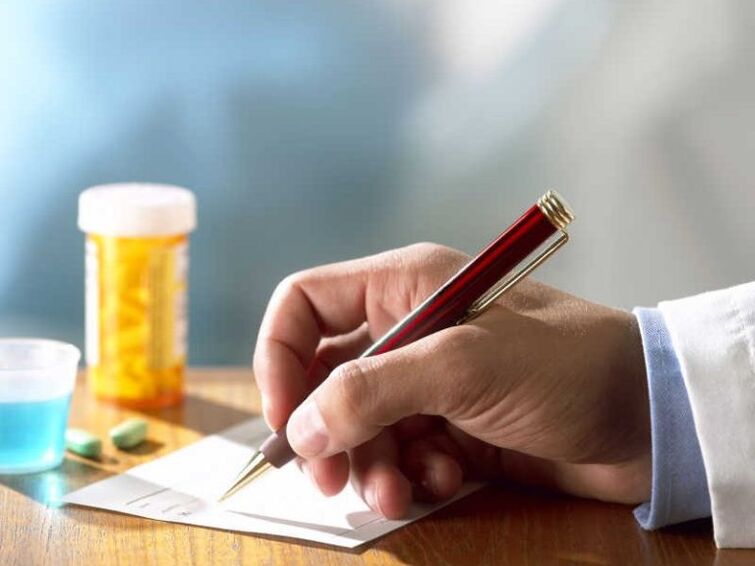
Since it is not always possible to defeat psoriasis with local therapy, it becomes necessary to supplement the treatment strategy with medication in tablet form. Side effects can increase significantly, so constant monitoring of your general health through tests and a doctor's visit is a must:
- Systemic glucocorticosteroids reduce the inflammatory process, swelling and itching, block the increased activity of skin cells. Side effects are extremely numerous, so the tablets of the Anna group are rarely prescribed.
- Whole-body psoriasis can be treated with methotrexate, which exhibits effective cytostatic and anti-inflammatory effects. The body responds quite positively to low doses. Rare side effects include increased fatigue, decreased appetite, and digestive problems.
- Retinoids are effective where the skin disease psoriasis cannot be treated otherwise. Side effects include hair loss and inflammation in the lip area. After using the tablets of this group, you can not give birth for 3 years, since retinoids provoke the appearance of birth defects.
- Cyclosporine has a lot in common with methotrexate and belongs to the category of immunosuppressants. An increase in blood pressure and the occurrence of kidney disease are the most common side effects.
- If the listed drugs cannot be used due to the characteristics of the patient's body, then it makes sense to prescribe hydroxyurea.
injections
Drugs that help get rid of psoriasis can be presented in the form of injections with the following components:
- Antihistamines immediately block acute itching;
- Glucocorticosteroids in the form of injections are used when tablets and ointments with this component are not effective;
- Biological preparations are the result of the synthesis of human and animal proteins. They have a beneficial effect on the body's immune system, but their price is too high for many patients.
Shampoo application
It is also worth considering special therapeutic shampoos, because only they can remove psoriasis on the head:
- Antifungal shampoos are effective when the causative agent of pathological inflammation is a fungal infection;
- shampoos containing corticosteroids;
- Tar shampoo or soap is used to get rid of psoriasis dandruff as well as reduce burning and itching. It is also acceptable to add birch tar directly to the shampoo that the patient usually uses.

medication
If the occurrence of psoriasis is diagnosed in a timely manner, many drugs can bring the right result, the specialist will recommend the most suitable one.

Biologically active substances
Since it is rarely possible to get rid of psoriasis quickly, dietary supplements should be taken as additional maintenance therapy:
- Vitamin D is useful because calcium is one of the most important minerals in the fight against the skin disease in question and vitamin D is needed for its absorption. The use of this supplement at the stage of transition from the active phase to the stationary phase is most effective.
- Silicon in the composition of vitamin-mineral complexes plays the role of a sorbent, attracting antigens, and also improves the condition of the skin.
- Lecithin is able to quickly restore epithelial cells that die with this pathology. The integrity of the skin is restored much faster, and the inflammatory process becomes less pronounced.
- Omega-3 acids and fish oil also help eliminate the inflammatory process.
Folk approaches to treatment
To increase the effectiveness of drugs, complex therapy can be supplemented with alternative methods of treatment. However, remember that psoriasis on the back and other areas can be sensitive to allergenic substances. Therefore, consult your doctor first:

- Chinese green tea helps reduce discomfort from skin itching, plaques light up. It can be used internally in the form of a drink or externally in the form of masks on the affected areas.
- Sunbathing can reduce the manifestations of psoriasis, especially when combined with sea water. UV exposure should not be direct, it is better to sunbathe in the shade. If you ignore this recommendation, the manifestations of psoriasis will only get rid of for a while, but soon the disease will return with even more pronounced negative symptoms.
- Ointment made from birch tar, salicylic alcohol and sea buckthorn oil should be applied directly to the affected areas for 2 hours. If the psoriasis on the abdomen or back is large enough, it is worth putting gauze over the ointment. After washing off the ointment, it is necessary to apply celandine tincture in the form of oil.
- An infusion of flaxseed allows you to get rid of the clinical symptoms of the disease in question in a week. Soak a spoonful of seeds in a glass of boiling water for a day, then boil, cool and strain, take in the morning before meals in combination with activated charcoal (1 tablet per 10 kg of body weight). The course should be continued for 20 days, even after the manifestations of psoriasis have disappeared. Products with caffeine in the composition should not be consumed.
- Propolis and butter in the form of an ointment in a 1: 20 ratio. Mix the ingredients, boil for 15 minutes, strain and apply to the affected areas. The product must be kept in the refrigerator.
- Celery decoctions can be taken orally once a day, and a compress can be applied for 2 hours for 21 days. Three courses with a week break is enough to forget about the disease for several years.
- Celandine powder and petroleum jelly in the form of an ointment must be applied to inflamed areas of the skin for 3 days. After a break of 4 days, the course continues until the external manifestations completely disappear. To create the product, all the components are mixed in equal proportions.
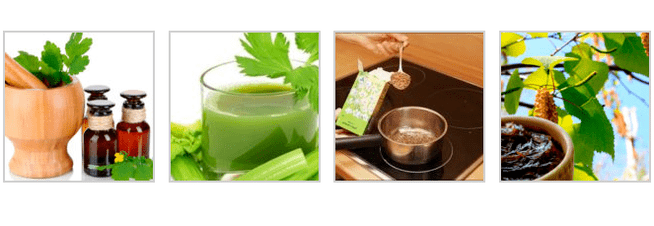
prevention
Prevention of psoriasis, as well as measures to prevent exacerbations, are relevant, as well as the treatment itself:
- The cleanliness of the skin must be monitored very carefully, use moisturizers based on natural ingredients.
- Monitor your overall health, especially if you have immune system issues. Taking multivitamin complexes is a mandatory part of psoriasis prevention.
- Regular massage improves lymph drainage and blood circulation, which means that putrefactive products are removed more quickly and the skin is better cleaned.
- Contact with household chemicals should be limited to the maximum. Gloves and household respirators are mandatory protective equipment if it is not possible to delegate housework to other family members. When choosing household chemicals, pay attention to the presence of dyes, chemicals and fragrances. The level of the Christmas tree should correspond to the natural one. It is also worth minimizing the use of skin care cosmetics and decorative cosmetics.
- Often the first signs of the disease appear after a nervous stress, so it is important to master various methods of relaxation and self-control. The benefits of sound sleep should not be overlooked. With frequent stress, taking soothing herbal tinctures and teas is permissible.
- First of all, smoking is a direct provocateur of both exacerbations and the disease itself. We are talking about smokers who consume more than 20 cigarettes a day. Under the influence of cigarette smoke, immunity decreases, blood vessels are impaired, and the body's antioxidant defenses are weakened. Alcohol does not affect the onset of this skin pathology, but it can aggravate its course.

psoriasis and pregnancy
Pregnancy significantly aggravates the treatment of psoriasis, since the use of widely on all drugs is allowed. It is also worth understanding in detail the issue of pregnancy planning and other situations related to this period in a woman's life.
pregnancy planning
The reproductive capacity of both women and men is not affected by the disease. As for potential harm to the baby, psoriasis is not transmitted through contact, so breastfeeding and communicating with the baby is not a problem. Another thing is the ability of the disease to be transmitted at the genetic level, but the probability is not so great - 8-15% if one of the parents is sick. The risk increases when both parents are affected - 50-60%.
If you are planning a pregnancy, you should first undergo further treatment to achieve remission. We speak specifically of a woman, since the condition of the father does not affect the posture of the fetus. Stress must also be minimized and dealt with responsibly in this aspect.

pregnancy
Speaking of the pregnancy itself, many note that the course of the pathology is significantly facilitated, but immediately after childbirth the symptoms worsen. This is due to the weakening of the woman's immune system as the child actually depletes the body and absorbs nutrients through the umbilical cord. If treatment is required during pregnancy, preference should be given to safer means with a minimal probability of side effects. Analyze your condition, and you can understand how the disease will behave in future pregnancies. Next, it is worth considering which means can be used, and which should be avoided.
| Forbidden | Recommended | |
| local treatment | Preparations based on vitamin A are generally contraindicated. | Glucocorticosteroids in the composition of ointments and creams are acceptable in minimal amounts. It is not recommended for use on the shoulders, abdomen and mammary glands, as cortisone can cause stretch marks to appear. |
| Vitamin D-based preparations are only permitted in small quantities in certain problem areas. | Soothing and moisturizing creams have no contraindications. | |
| systemic treatment | Methotrexate and acetritin provoke miscarriage or fetal defects. Treatment with these drugs before childbirth requires abstinence from pregnancy for 4 months. Also, such drugs adversely affect the state of men's sperm, so the rule of observing this period also applies to the man. | UV-B phototherapy is not harmful to the unborn child or the mother. |
| Puva therapy during pregnancy is also not suitable, as it requires the prior use of photosensitizers. | In severe cases of the disease, Cycloporin can be prescribed, which does not have a negative effect on the child's body, but can provoke side effects in the mother. |
Caesarean section
The presence of psoriasis is not a reason for performing a cesarean section during childbirth, but it is worth considering the possibility of Koebner's phenomenon. We are talking about the appearance of psoriasis in areas where the skin has been damaged. To date, no formal studies have been conducted on the healing rate of these areas and the risk of infection.
Psoriasis after childbirth
After childbirth, in most cases, there is an exacerbation of pathology, the cause of which is stress, fatigue, chronic lack of sleep, irregular and restricted nutrition, and hormonal imbalance. Breastfeeding is allowed, since the pathology is not transmitted to the child with milk. However, with large-scale use of drugs, breastfeeding is not recommended, since some components can get into the milk.
No drug can guarantee 100 percent safety for the mother and fetus, so consultations with the doctor directing the pregnancy are mandatory.
Despite the fact that psoriasis is chronic, with a well-planned treatment, it is possible to successfully eliminate negative symptoms and avoid reducing the quality of life due to the many limitations that come with the disease.


























